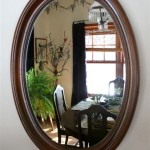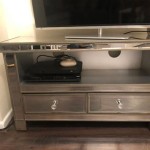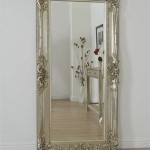How to Hang a Heavy Mirror on Plasterboard
Hanging a heavy mirror on plasterboard walls presents a unique set of challenges. Plasterboard, while convenient, isn't inherently designed to support substantial weight. Therefore, specific techniques and hardware are necessary to ensure the mirror hangs securely and safely.
Assessing the Mirror and Wall
Before attempting to hang the mirror, careful assessment is crucial. This assessment involves understanding the weight and dimensions of the mirror and the type of plasterboard wall it will be hung on.
- Weigh the mirror accurately: Use a bathroom scale or similar device to obtain the precise weight. This information is essential for selecting appropriate hanging hardware.
- Measure the mirror's dimensions: Knowing the height and width allows for proper placement and ensures the chosen hanging method is compatible with the mirror's size and shape.
- Identify the plasterboard type: Standard plasterboard is typically ½ inch thick. Thicker plasterboard, while less common, offers more support. Knowing the thickness helps in choosing the correct fixings.
- Locate wall studs: Studs offer the most secure anchoring points in a plasterboard wall. Using a stud finder can help locate these structural supports.
Choosing the Right Hanging Hardware
The weight of the mirror dictates the type of hanging hardware required. Heavier mirrors necessitate stronger fixings designed specifically for plasterboard.
Types of Hanging Hardware for Heavy Mirrors
Several options are available for securely hanging heavy mirrors on plasterboard:
- Heavy-duty wall anchors: These anchors expand behind the plasterboard, distributing the weight across a larger area. They are suitable for medium-weight mirrors.
- Toggle bolts: These bolts use spring-loaded wings that expand behind the wall, providing a strong and secure hold for heavier mirrors.
- Hollow wall anchors: These anchors create a threaded socket within the wall, allowing for a secure screw attachment. They offer moderate weight capacity.
- French cleats: This system uses interlocking wooden brackets, one attached to the wall and the other to the back of the mirror. It distributes the weight evenly and is suitable for very heavy mirrors.
Hanging the Mirror Securely
Once the appropriate hardware has been selected, the following steps outline the process of hanging the mirror safely and effectively:
- Mark the desired location: Using a pencil and level, mark the desired position of the mirror on the wall. Ensure the markings are accurate and reflect the mirror's hanging points.
- Install the chosen hanging hardware: Follow the manufacturer's instructions precisely for installing the selected anchors or cleats. Ensure the hardware is securely fastened into the wall.
- Hang the mirror: Carefully lift the mirror and align its hanging points with the installed hardware. Ensure the mirror is seated correctly and securely on the hardware.
- Check the stability: Once hanged, gently tug on the mirror to confirm its stability. If any movement or looseness is detected, re-evaluate the hardware and installation process.
Utilizing Wall Studs Whenever Possible
Wall studs provide the strongest support within a plasterboard wall. When possible, hanging heavy mirrors directly onto studs is the most secure method.
- Locate the studs: Use a stud finder to pinpoint the exact location of the studs behind the plasterboard.
- Use appropriate screws: Choose screws specifically designed for wood and long enough to penetrate the stud sufficiently.
- Pre-drill pilot holes: Drilling pilot holes before inserting screws prevents the wood from splitting and ensures secure anchoring.
Considerations for Extra-Heavy Mirrors
For exceptionally heavy or oversized mirrors, additional support measures may be necessary.
- Reinforce the wall: In some cases, reinforcing the wall structure behind the plasterboard may be required. This might involve adding additional wooden bracing between the studs.
- Consult a professional: For extremely heavy mirrors, especially those exceeding manufacturer recommendations for standard hanging methods, consulting a professional installer is advisable.
- Consider alternative hanging methods: For mirrors that are simply too heavy for wall hanging, alternative display methods, such as leaning the mirror against the wall with appropriate safety precautions, might be necessary.
Safety Precautions
Safety should always be a paramount concern when hanging heavy objects.
- Use appropriate safety gear: Wear safety glasses and gloves to protect against dust and potential injuries.
- Enlist assistance: For large or heavy mirrors, having someone assist with lifting and positioning can prevent strain and accidents.
- Work in a clear space: Ensure the area around the wall is clear of obstacles to allow for safe and unobstructed movement.

How To Hang A Large Or Heavy Mirror

How To Hang A Heavy Picture On Plasterboard Wall

How To Hang A Very Heavy Picture Or Mirror The Best

How To Hang A Heavy Picture On Plasterboard Wall
How To Hang A 100 Pound Mirror On Drywall Quora

Gripit How To Hang A Mirror Onto Plasterboard Wall

Hanging Heavy Mirror On Plaster Walls 6 Steps With Pictures Instructables

Hang A Mirror On Plasterboard Wall Soraya Interiors

Hanging A Mirror On Plasterboard Wall Howto

How To Hang A Very Heavy Picture Or Mirror The Best








